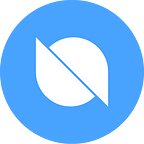An Overview of Ontology’s ONT ID and DDXF
In the previous 2 recap articles, we have introduced the explanation of “TRUST Redefined” by Ontology’s Founder Li Jun and the announcement of the largest-ever global university blockchain workshop by Ontology’s Marketing Director Jesse LIU.
Ning HU, Senior Architecture Expert at Ontology, also gave a detailed introduction to ONT ID, Ontology’s decentralized identity framework and DDXF, its distributed data exchange framework at the media conference.
When introducing ONT ID, Ning HU explained that “ONT ID is an identity framework based on decentralized identification protocol using blockchain and cryptographic technology, which is able to instantly identify and connect people, assets, things, and affairs. ONT ID helps users ensure the privacy and security of their data, giving users full control over their own identity and personal data.”
ONT ID has four features:
Compared to existing internet-based digital identity systems, ONT ID addresses a number of the pain points of traditional ID systems. For example, lack of individual role, data oligopoly, fragmented sources of trust, difficulty in achieving accuracy in identity verification, in identifying and managing IoT, in assessing reputation comprehensively and in tracing content copyrights. In order to solve these issues, Ontology offers the following solutions:
- Multi-dimensional trust support based on fine-grained entities;
- Data authentication and distributed data token management;
- Access to multi-dimensional trust sources, control over personal credentials;
- An anonymous claim and quantified trust assessment scheme based on verification requirements;
- Open ONT ID protocol is compatible with IoT identification protocol;
- Quantitative assessment of multi-dimensional trust sources based on given scenarios;
- Data identification based on tamper-proof and traceable blockchain technology.
Based on DDXF, the ownership of resources can be confirmed and circulated on the chain. Users can exchange their resources for ONG and other OEP-4 assets or for other resources. DDXF supports digital and physical resources and allows various forms of resource circulation, which includes the circulation of its ownership, right to use, etc. For off-chain resources, DDXF enables users to transact off the chain with a smart contract, so as to meet the need for compliance and security and consistency.
Ning HU added that: “based on ONT ID, you can realize the mapping of the traditional Internet and IoT entities and data. By using DDXF, you can apply the mapping to cross-system information interaction and delivery, thus using the tamper-proof and traceable blockchain technology to realize multi-system data interoperability.” He also revealed that “ONT ID and DDXF will be used on the decentralized platforms of MovieBloc and Muzika, two of Ontology’s ecosystem partners in the entertainment sector, allowing global users to access quality services while ensuring their data privacy and security.”
Are you a developer? Make sure you have joined our tech community on Discord. Also, take a look at the Developer Center on our website, there you can find developer tools, documentation, and more.
Find Ontology elsewhere
Ontology website / Ontology GitHub / ONTO website / OWallet (GitHub)
